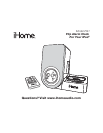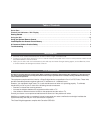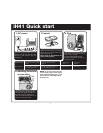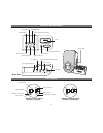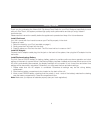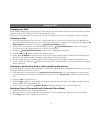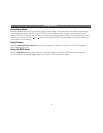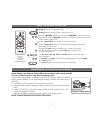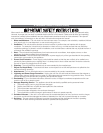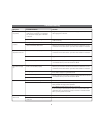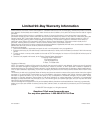
8
A Consumer Guide to Product Safety
When used in the directed manner, this unit has been designed and manufactured to assure your personal safety.
However, improper use can result in potential electrical shock or fire hazards. Please read all safety and operating
instructions carefully before installation and use. Keep these instructions handy for future reference. Take special
note, and adhere to all warnings on the unit and in the instruction and service manual.
1. Water and Moisture - The unit should not be used near water. For example, near a bathtub, washbowl, kitchen
sink, laundry tub, in a wet basement, or near a swimming pool, etc.
2. Ventilation - The unit should be situated so that its location or position does not interfere with its proper
ventilation. For example, it should not be situated on a bed, sofa, rug, or similar surface that may block the
ventilation openings; or placed in a built-in installation, such as bookcase or cabinet that may impede the flow of
air through the ventilation openings.
3. Heat - The unit should be situated away from heat source such as radiators, heat register, stoves, or other
appliances (including amplifiers) that produce heat.
4. Power Sources - The unit should be connected to a power supply only of the type described in the operating
instructions or as marked on the appliance.
5. Power Cord Protection - Power supply cord should be routed so that they are not likely to be walked on or
pinched by items placed upon or against them. It is always best to have a clear area from where the cord exits
the unit to where it is plugged into an AC outlet.
6. Cleaning - The unit should be cleaned only as recommended by the manufacturer.
7. Object and Liquid Entry - Care should be taken so that objects do not fall and liquids are not spilled into the
enclosure through openings.
8. Attachments - Do not use attachments not recommended by the product manufacturer.
9. Lightning and Power Surge Protection - Unplug the unit from the wall outlet and disconnect the antenna or
cable system during a lightning storm or when it is left unattended and unused for long periods of time. This will
prevent damage to the product due to lightning and power-line surges.
10. Overloading - Do not overload wall outlets, extension cords, or integral convenience receptacles as this can
result in a risk of fire or electric shock.
11. Damage Requiring Service - The appliance should be serviced by qualified service personnel when:
A. The power-supply cord or plug has been damaged.
B. Objects have fallen into or liquid has been spilled into the enclosure.
C. The unit has been exposed to rain.
D. The unit has been dropped or the enclosure damaged.
E. The unit exhibits a marked change in performance or does not operate normally.
12. Periods of Nonuse - If the unit is to be left unused for an extended period of time, such as a month or longer,
the power cord should be unplugged and take out batteries from the unit to prevent damage or corrosion.
13. Servicing - The user should not attempt to service the unit beyond that described in the user’s operating
instructions. All other servicing should be referred to qualified service personnel.



